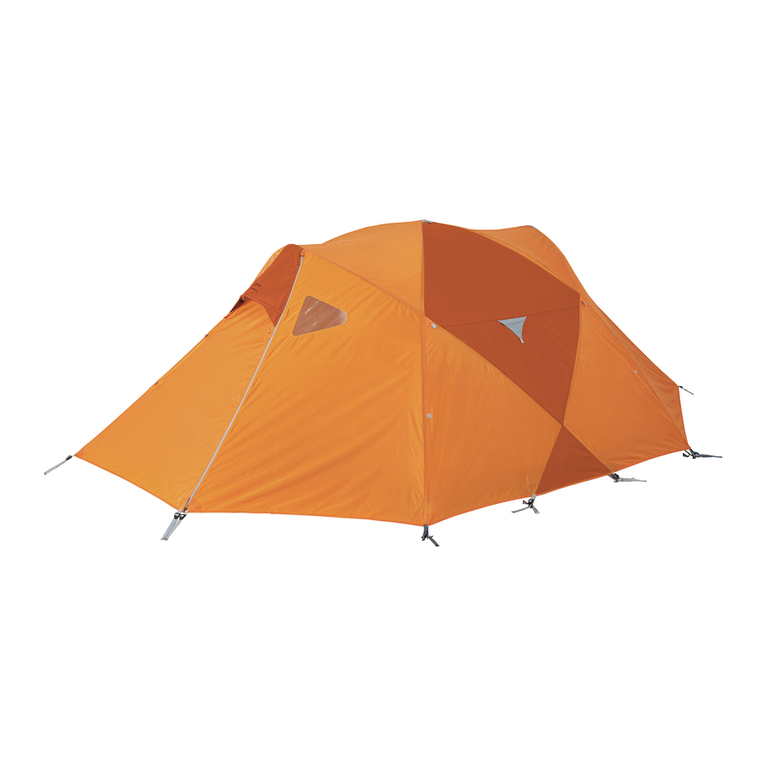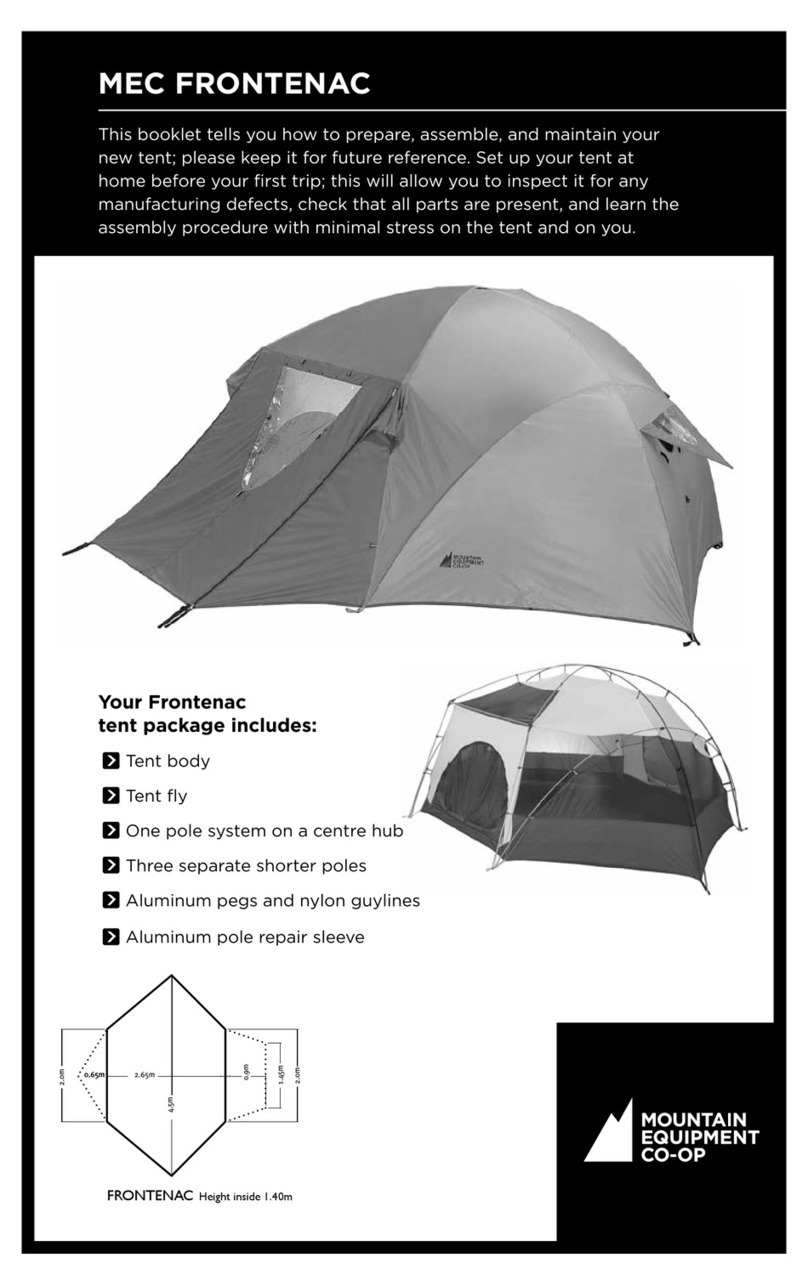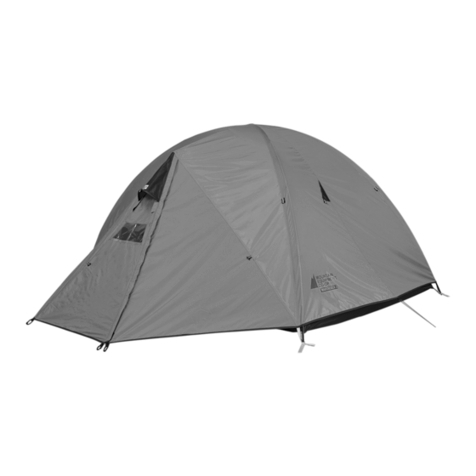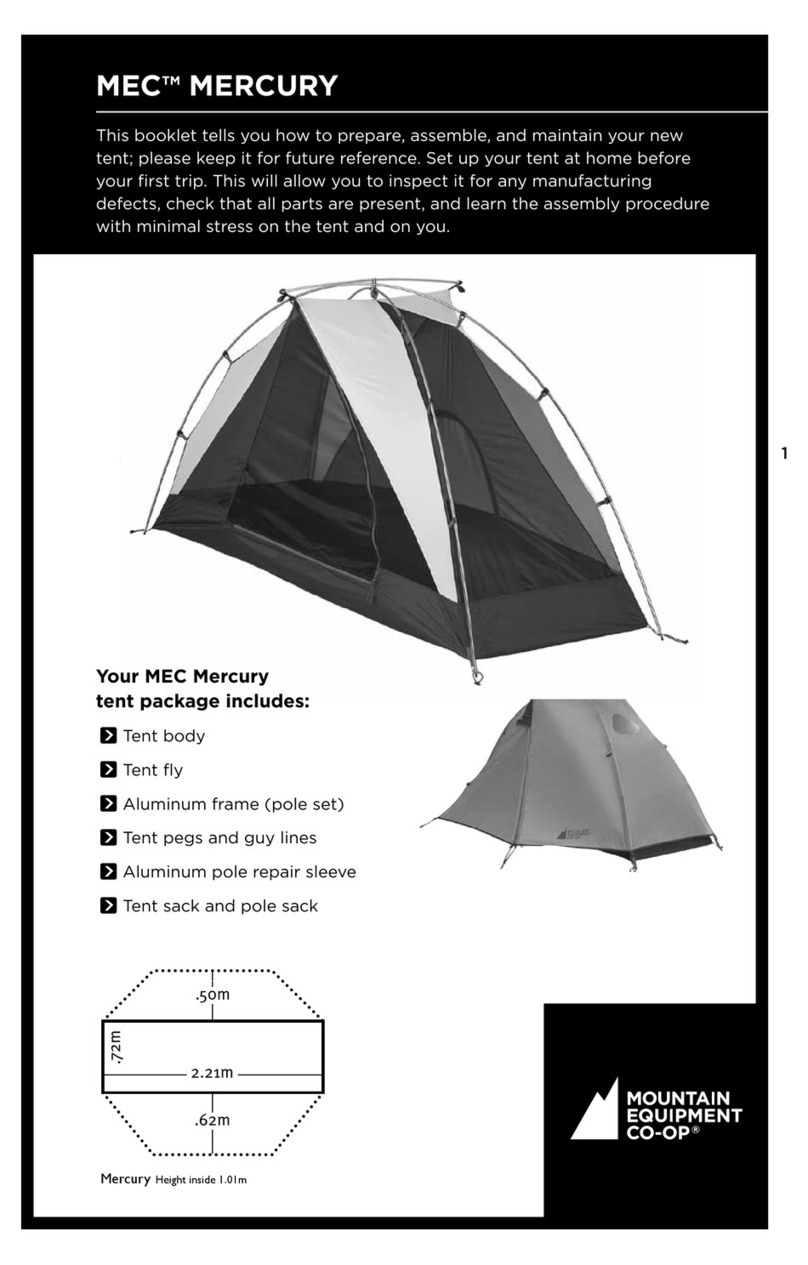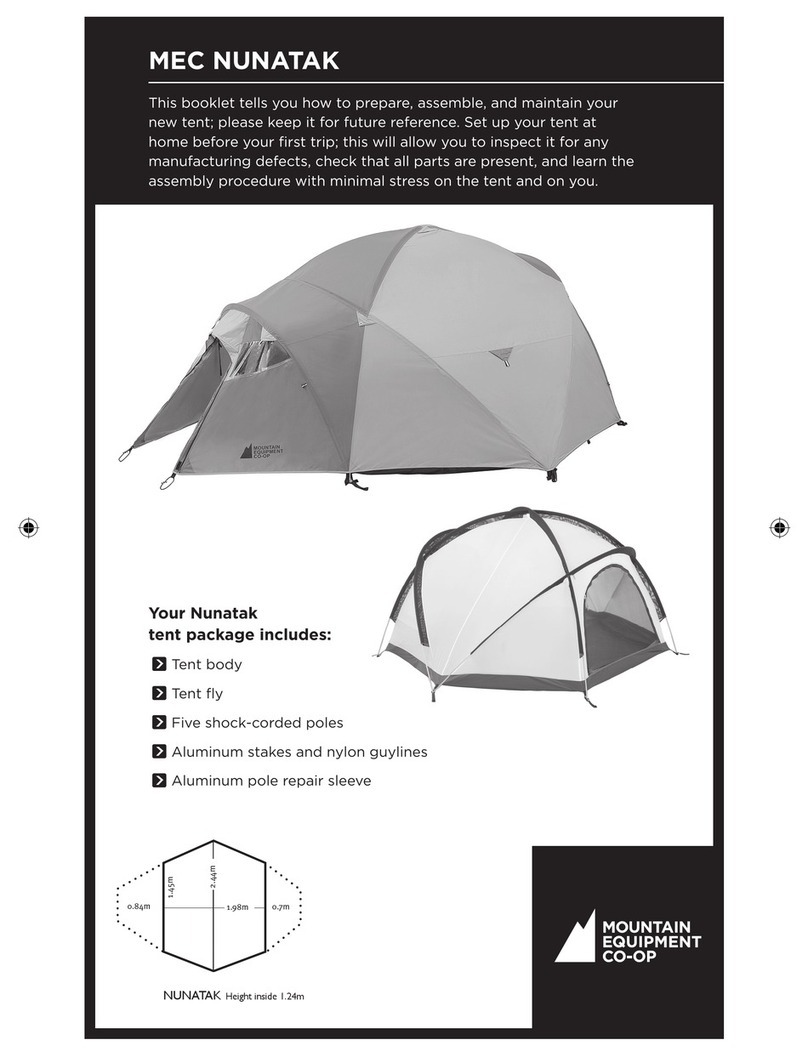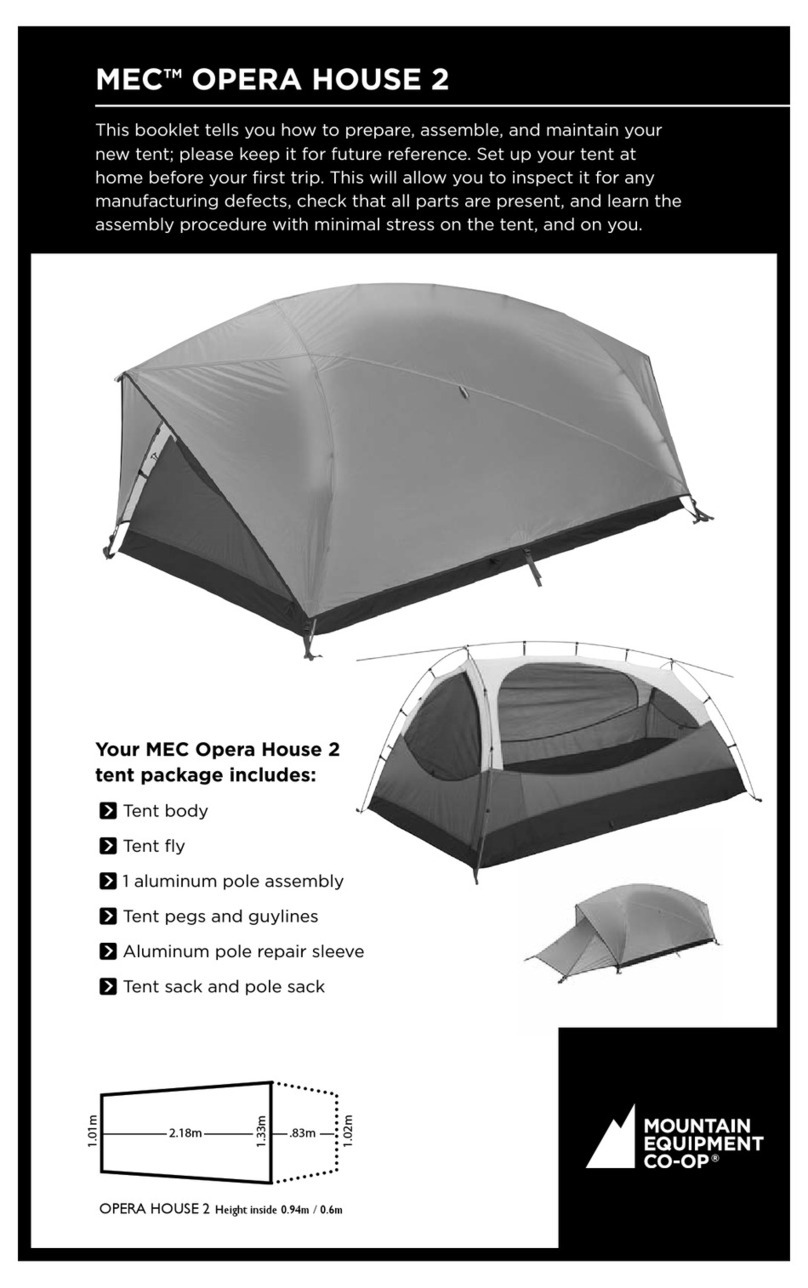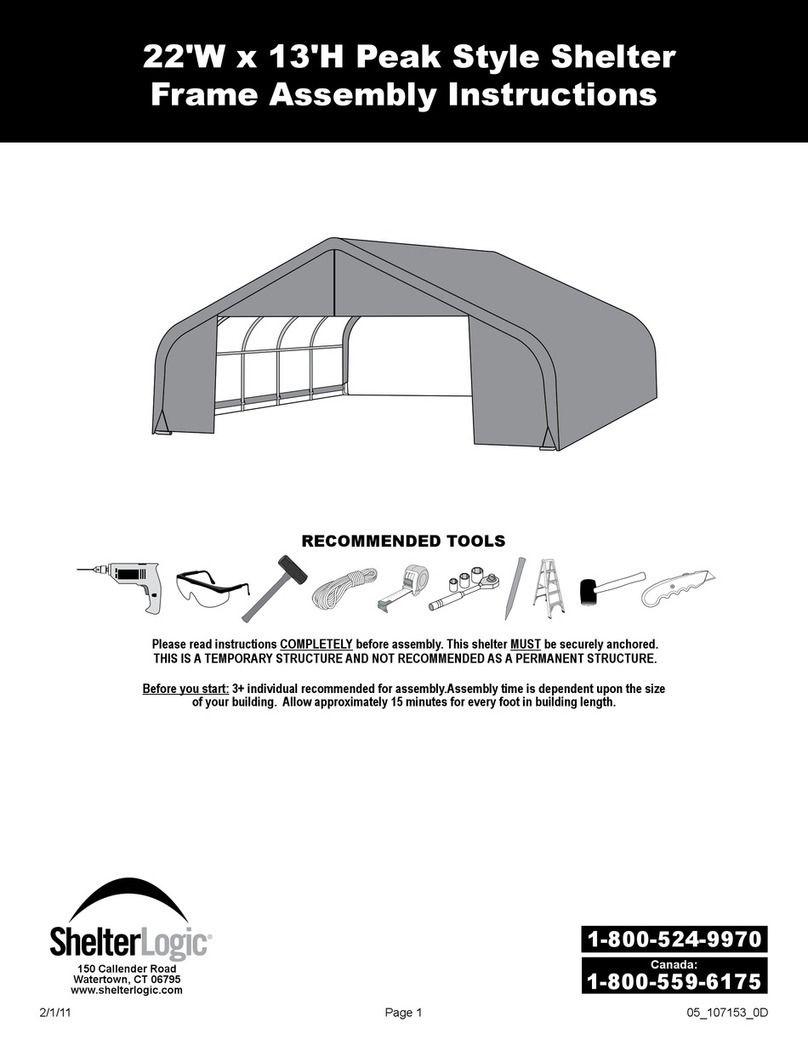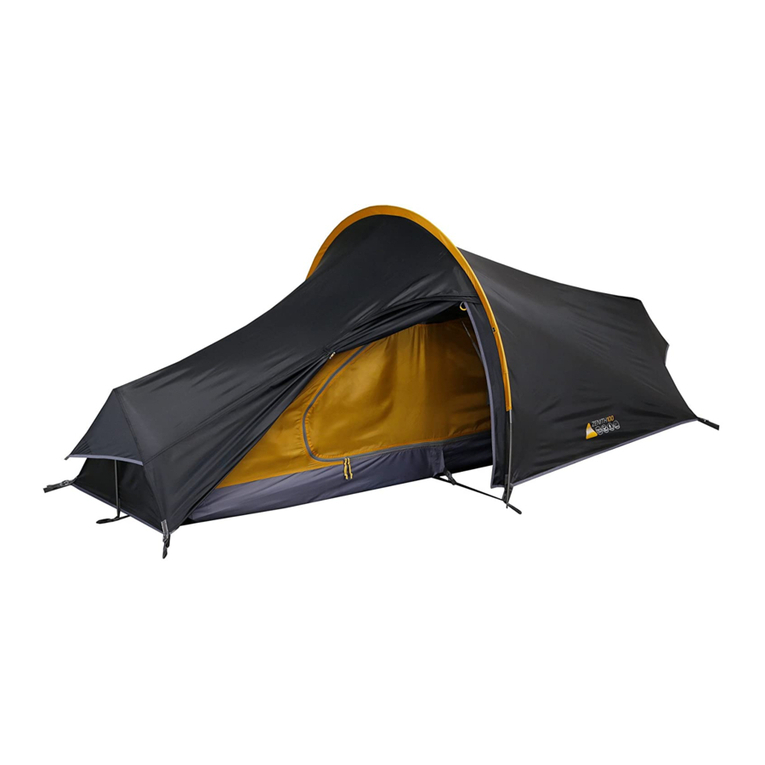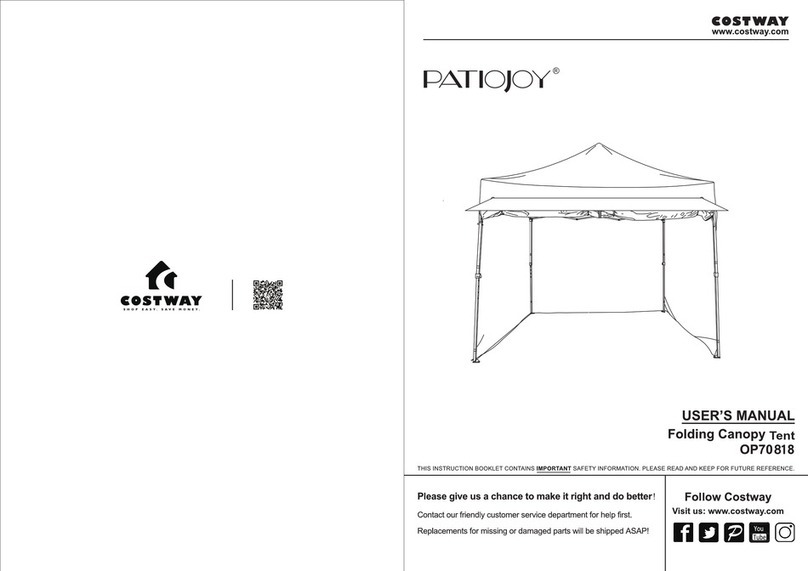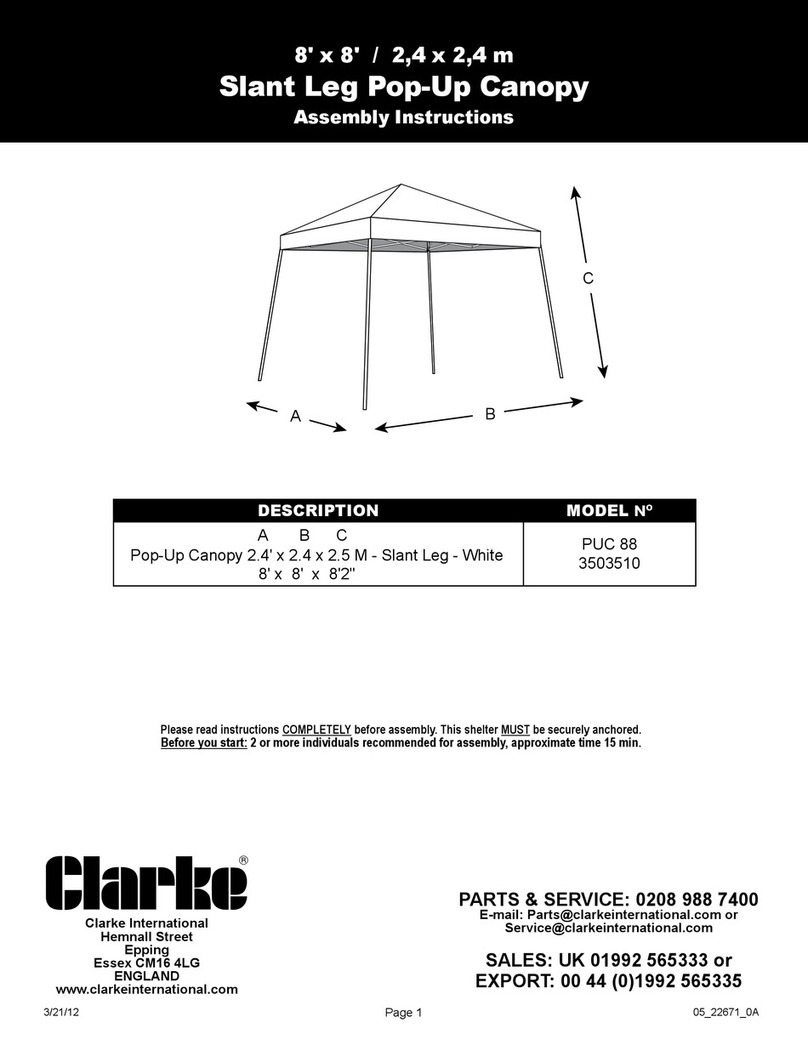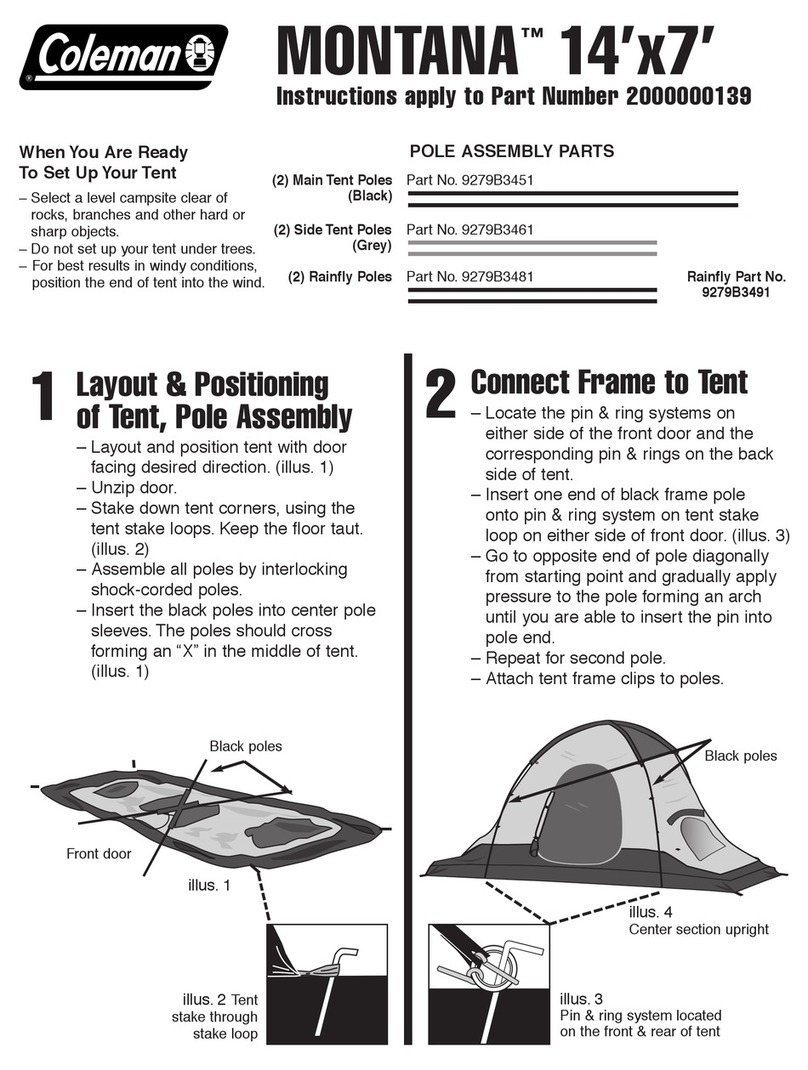
Run the remaining angled pole through the pole sleeve across the top of
the mesh vestibule. Insert the second wire pins at the front tent corners
into the ends of this pole. Attach the pole clips.
Peg out the ground loops at the front corners of the vestibule to pull
it into shape.
Lay the skirting along the bottom edges towards the inside of the mesh
vestibule. Laying the skirting out at and wide will block insects most
effectively. The skirting can be anchored in place by rocks, stuff sacks,
etc.
Peg out the back (non-mesh) vestibule and tie it back if desired. Note
that the vestibule has peg loops on either side of the door zippers. By
staking out one loop or the other, you can make the door side-opening
or centre-opening to adapt it to the prevailing wind or local landscape
features.
The centre panel of the back vestibule can also be rigged as a porch roof.
Most users prefer to save weight and cost by improvising porch poles out
of dead wood, paddles, lines running to trees, etc. For this reason, the tent
does not come with porch poles; if you prefer maximum convenience, one
or two optional MEC Adjustable Tarp Poles will work well.
If rigging this panel as a rain roof, do not leave at or baggy surfaces
where water can pool. Rig the panel so it slopes away from the tent, like
a cap brim. You can also rig it to slope towards the tent so water drains
off to the sides.
If you have not already done so, peg out the corners of the tent.
If desired, peg out the ground loops along the tent sides.
We strongly recommend you peg out the four guy line anchor points
using the lines supplied. The guy line anchor points are the triangular aps
at the back corners and the mesh vestibule corners. Adjust the guy lines
so that they are taut, but not so tight that the tent fabric puckers. The
guypoints should counter-balance one another for maximum stability and
minimum stress on the tent. The guy lines may need to be tightened or
loosened as the tent fabric stretches or shrinks with dampness or dryness.
Use only the triangular anchor points for attaching guy
lines. The regular loops on the tent y are intended only for holding the
toggles when rolling up panels for access or ventilation. Attaching guy
lines to these loops can damage the loops and/or the tent y.
